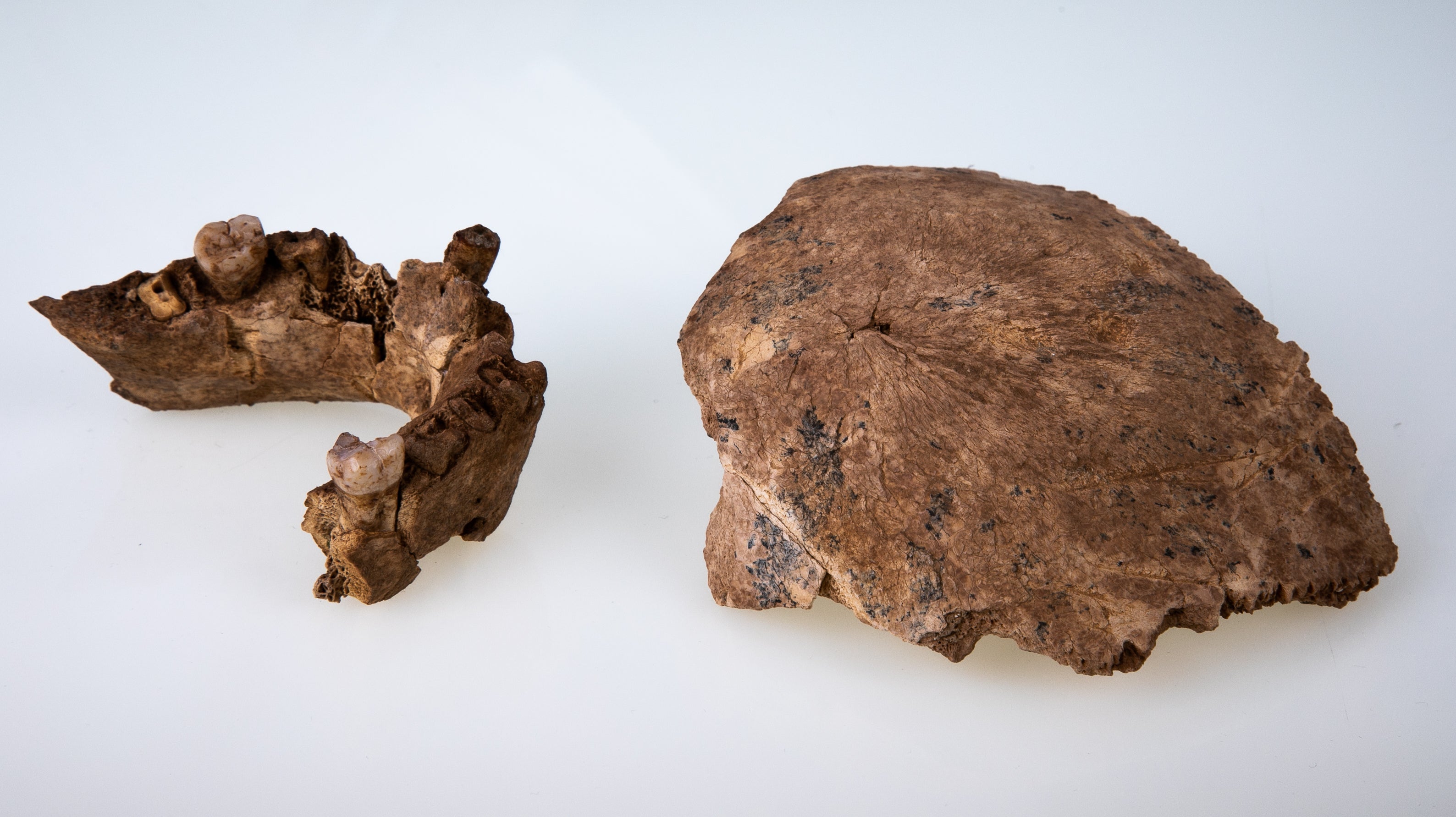Researchers identify a new type of early human with no chin and large teeth from around 400,000 years ago
‘The discovery of the Nesher Ramla site writes a new and fascinating chapter in the story of human kind’, Celine Wadhera writes

Researchers in Israel have identified a new type of early human, thought to be the ancestor of Neanderthals, and a missing link in the story of human evolution.
Human fossils, animal bones and stone tools were found at a prehistoric site in the mining area of the Nesher cement plant near the city of Ramla, Israel.
An international team of anthropologists and archaeologists, led by researchers from Tel Aviv and Jerusalem, determined that the human bones belonged to a new, previously unidentified type of Homo sapiens.
These new early humans were named Nesher Ramla Homo, paying homage to the site.
The human fossils were dated to 140,000 to 120,000 years ago, but researchers believe that these early humans lived in the Levant as early as 400,000 years ago.
Morphologically, the Nesher Ramla Homo shares features with both Neanderthals and archaic Homo species, as fossils showed their skulls to have very large teeth and no chins.
Researchers suggest that these early humans are likely the “source” population from which most humans in the Middle Pleistocene (700,000 to 130,000 years ago) evolved.
Homo sapiens are believed to have mated with the Nesher Ramla Homo around 200,000 years ago, based on shared technological traditions and tool use.
The head of the archaeological team, Dr Yossi Zaidner, of the Hebrew University of Jerusalem found the important human fossil during the salvage excavation.
He said: “This is an extraordinary discovery. We had never imagined that alongside Homo sapiens, archaic Homo roamed the area so late in human history.
“The archaeological finds associated with human fossils show that Nesher Ramla Homo possessed advanced stone tool production technologies and most likely interacted with the local Homo sapiens.”
Despite a lack of DNA evidence, the study’s comprehensive analysis of parietal bones, a mandible and a lower second molar determined that the Nesher Ramla Homo were a distinct group with a combination of Neanderthal and archaic features.
“The parietal documents a rather archaic shape of the braincase; the mandible is similar to that of Middle Pleistocene Homo; the molar is quite Neanderthal-like,” the study says.
It adds that the Nesher Ramla Homo was “distinct from Homo sapiens” as it appears to be “at an intermediate position between the Neanderthal” and the Middle Pleistocene Homo clusters. But, authors found that its evolution was close to the split from Homo erectus, in human evolution, but far removed from early and recent Homo sapiens.
Authors suggest that based on their findings, Neanderthals may have originated in the Levant, rather than in Western Europe as was previously thought, and that Neanderthal remains found in Europe could actually be the remnants of a much larger Levantine population.
Dr Hila May, a lead anthropologist on the study, from the Sackler Faculty of Medicine at Tel Aviv University, said that the Nesher Ramla findings offer a solution to the mystery of how Homo sapiens genes were found within Neanderthal populations in Europe, long before Homo sapiens were thought to have arrived in Europe.
Recent genetic and demographic studies have indicated that an African or West Asian Neanderthal-like population, referred to as the “missing population” or “X population” contributed to the evolution of Neanderthals. Authors of the study believe that the Nesher Ramla Homo could be this missing link, by co-mingling with Homo sapiens and migrating outwards into Europe and Asia.
Dr Rachel Sarig, another lead anthropologist on the study from the Sackler Faculty of Medicine and the Dan David Centre for Human Evolution and Biohistory Research, said that the Nesher Ramla Homo was a group in and of itself, with “distinct features and characteristics”.
She added: “At a later stage small groups of Nesher Ramla Homo type migrated to Europe — where they evolved into the ‘classic’ Neanderthals that we are all familiar with, and to Asia, where they became archaic populations with Neanderthal-like features.”
“As a crossroads between Africa, Europe and Asia, the land of Israel served as a melting pot where different human populations mixed with one another, to later spread throughout the Old World,” she said.
“The discovery of the Nesher Ramla site writes a new and fascinating chapter in the story of humankind.”
Study author Professor Gerhard Weber, from Vienna University, believes that the story of Neanderthals will be told quite differently following the Nesher Ramla discovery, suggesting that the Levant region was a starting point for their evolution.
“Europe was not the exclusive refugium of Neanderthals from where they occasionally diffused into West Asia,” he said.
“We think that there was much more lateral exchange in Eurasia, and that the Levant is geographically a crucial starting point, or at a least bridgehead, for this process.”
The study, “A Middle Pleistocene Homo from Nesher Ramla, Israel”, was published in Science, as was a companion paper on the Nesher Ramla Homo’s way of life and culture.
Join our commenting forum
Join thought-provoking conversations, follow other Independent readers and see their replies
Comments